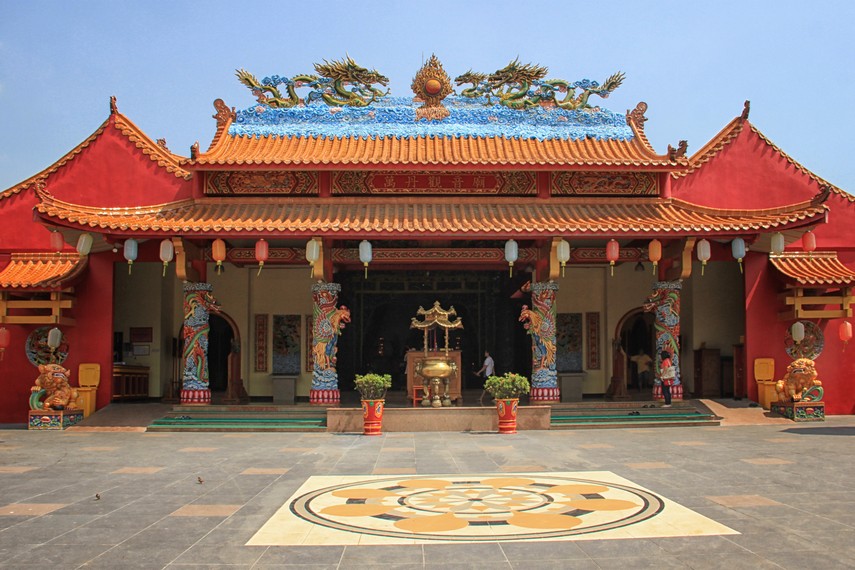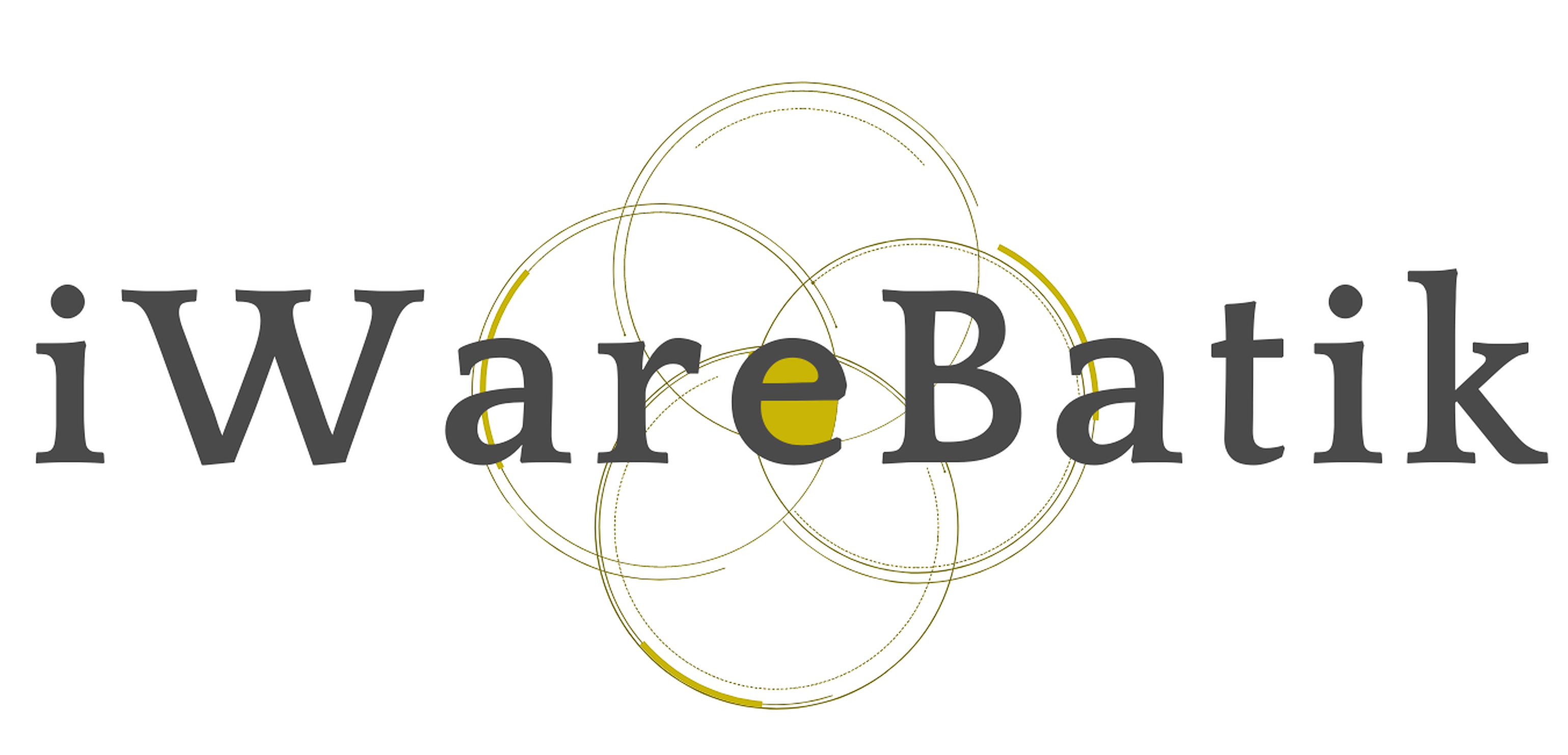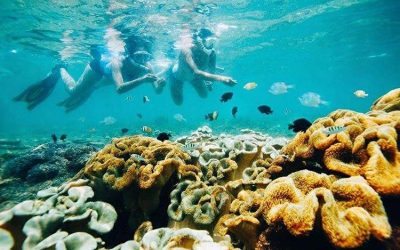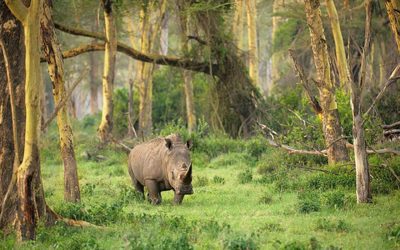Home / Batik Regions – Western Indonesia – Java Island – Banten / Avalokitesvara Buddhist Shrine
Cultural Destination
Embrace the spirit of the place!
Avalokitesvara Buddhist Shrine
Banten province – Java Island, Indonesia

Avalokitesvara Shrine (photo: Tridharma)
Avalokitesvara Buddhist Shrine
If you have a passion for history and you like to get to know new things about the place you visit, you should definitely visit this place. It is the oldest Chinese temple in Banten. While exploring this temple, visitors can see the Goddess Kwan Im (Guan Yin) and relics from the Emperor of China during the Ming Dynasty period.
Tourist Attractions in Banten
Tanjung Lesung Coral Conservation
What about an underwater experience in Banten? If you are up for it and
Ujung Kulon – UNESCO World Heritage Site
This park is UNESCO’s world heritage sites situated in Ujung Jaya Village. The important
Banten
Batik Motifs
Tangerang Herang
Tangerang Herang motif is a symbol of Tangerang city. The Tangerang Herang batik motif consists of
Srimanganti
The name of the Srimanganti motif is derived from Palace’s hallway that connects to
Singayaksa
The Singayaksa motif comes from the name of a place where Sultan Hasanuddin used to
Leuit Sijimat
This motif reflects the daily activities of the Baduy tribe in Banten. The main ornaments of batik motif consist of:
Discover
Indonesian
Batik
Motifs
Salakanagara
Salakanagara batik motif illustrates the first kingdom in the Betawi land
Taiganja
Taiganja is a precious gold pendant that shows the social status of the Kaili family. It is
Daun Sirih
This motif illustrates betel leaves that are used by Lombok communities as traditional
Pala Salawaku
This motif illustrates the unique weapons of the Maluku region, namely
Jumputan Bintang
The word Jumputan means the tie-dye technique, while the word “Bintang” refers to
Kaganga Tanah Rejang
If Batik Besurek combines Arabic calligraphy motifs, then the Kaganga batik takes
Malinau Cultural Festival
You will witness a unique competition that might not be found other than in
Awan Berarak
Awan Berarak is a combination of Dayak motifs and Malay patterns. The word ‘Awan Berarak’ means the
Biji Kopi
The coffee seeds motif illustrates the pride of local coffee specialities in
Ukir Sentani
The Ukir motif is a batik motif that is inspired by various traditional Sentani wood carvings
Sido Mulyo
Sidomulyo is one of the classical motifs, which is specifically used for the bride’s costume in
Pohon Hayat (Tree of Life)
The Batik motifs in Lampung are dominated by the acculturation of Buddhist and
Parang Rusak
Another meaning behind this motif is an unconquerable spirit, symbolized by
Tifa Totobuang
The batik motifs illustrate Maluku’s traditional music instrument called
Karawo Pinang
Pinang refers to the Palm areca tree. This motif is considered as the original
Tabir Tanjung
Tanjung flower is a type of Cherry tree flower, which is commonly found in
Ikan tambal
The word “Ikan” refers to fish. The philosophical meaning of Ikan Tambal means is
Tampuk Manggis Sasirangan
The motif illustrates the philosophy of the mangosteen fruit, which is
Gentala Arasy
Built as high as 80 meters, the tower also highlights the historical side of
Lok Baintan Floating Market
As you can imagine, the most authentic thing is that you can buy things and even
Honai
The Honai is inspired by the traditional house of the Papuan community living in
Gonggong Beruntun
This motif illustrates that a person should maintain a positive attitude and
Paqbarre Allo
The word “Barre” means round and “Allo” means the sunlight. This motif is interpreted as
Hiu Taliyasan
Indonesia is also home to the world’s largest fish, the whale shark (Rhincodon typus). Hiu Taliyasan refers to
Sekomandi
Its philosophical meaning is the eternal union which refers to a saying “until death do us part”
Gorga Simeol-Meol
The Gorga Simeol-meol is a pattern of plant tendrils. it is regarded as a symbol of longevity and
Gigi Haruan Lidi
The Gigi Haruan Lidi motif is taken from the name of the cork fish and is a symbol of
Desa Na Tolu
The Desa Na Tolu characteristic pattern symbolizes the Batak philosophy of existence and
Daun Lada Hitam
The black pepper motif represents the main commodity of Bangka Belitung
Sero Tangga
The Sero Tangga illustrates an endearing feeling and sacrifices of a person to fulfil
Sandeq
Sandeq Boat is a symbol of the maritime importance of the West Sulawesi region. The greatness of
Keluak Daun Pakis
The word “Keluak” is a Minang language which means twisted or tangled. The Motif of
Tikar Natuna
The Tikar Natuna motif is adapted from the traditional making of pandanus mats in
Tubo Kelapa
Coconut tree is a symbol of a good character and strong mentality. It illustrates the more success a person, the more
Tengkawang Ampiek
With its many advantages, the Dayaks use this leaf in ritual ceremonies. This plant is a symbol of
Gumin Tambun
Based on Hindu mythology, this motif symbolizes lucks, abundant wealth, and
Bomba Mawar
This motif means sacred love for family, kingdom, and God; It also illustrates
Enggang Dayak
Local people beliefs that hornbills are an incarnation of the Commander of the Birds. It has supernatural
Teguh Bersatu
This batik motif shows the strength of the people of Kupang. It also represents a sense of
Rangkiang
The word “Rangkiang” refers to the rice granary in the Minangkabau language. It symbolizes
Burung Bidadari
Bidadari birds are endemic birds in Halmahera. This motif represents an
Manguni Minahasa
Manguni is identified as the symbol of the Minahasa people. Manguni is known as a
Lipaq Sabe
Lipaq Saqbe contains a simple geometric classical motif with various flower decorations. This textile is
Pati-Pati Pinehiku
It symbolizes the hierarchy in society and the social status of the Mekongga
Singayaksa
The Singayaksa motif comes from the name of a place where Sultan Hasanuddin used to
Pucuk Rebung Riau
Pucuk Rebung symbolizes heart determination in achieving goals, good luck, and
Raja Ampat
Raja Ampat motif represents the marine life at Raja Ampat archipelago in
Pinawetengan
The Pinawetengan Batik pattern was taken from a prehistoric inscription in
Karawo Mahkuta
Mahkuta refers to Gorontalo’s traditional crown. It represents noble characters of
Jupri Kembang Teh
Kembang Teh illustrates the tendrils of tea plants that grow in the highlands of
Tongkonan
Toraja’s traditional house is called Tongkonan. Tongkonan is a place for
Sekar Jati
Sekar means flower and Jati refers to teak trees that symbolizes a strong mental character that
Wakatobi
It symbolizes the coastal beauty of the Wakatobi island and the symbol of Patra symbolizes
Parang Seling
Parang Seling or “alternating daggers” is a royal batik motif. It is a feminine variant of
Kasih Tak Sampai
‘Kasih Tak Sampai’ is an idiom in the Indonesian language which refers to
La Galigo
La Galigo is a literary work of the Buginese Epic that has 300 thousand epic lines. It is considered even
Dayak Kamang
Kamang motif is generally found in the Dayak tribe shield because it is believed to
Kaharingan
The Kaharingan or ‘tree of life’ based on the Dayak tribes’ belief system. This tree symbolizes
Pattimura
Pattimura is the name of an Indonesian hero who fought against colonialism in
Ake Patra
Ake is related to the divinity and the composition of the universe. It is a symbol of
Durian Pecah
Broken Durian motifs depict the foundation of faith. The second half signifies the mastery of
Prada Papua
The word “Prada” in the Javanese-Indonesian dialect means a batik textile that
Tangerang Herang
Tangerang Herang motif is a symbol of Tangerang city. The Tangerang Herang batik motif consists of
Besurek Rembulan
This batik illustrates praise for God who created the wonderful universe
Mahkota Siger
Siger is the crown of a noblewoman in ancient time. It is a symbol of femininity, strength, and
Bekantan Pakis
This motif represents Pakis Haji (Polystichum setiferum), an endemic plant in
Bintik Tujuh
The Bintik Tujuh (Seven Dots) motif has 7 white spots and green color gradation as
Tenun Bima
The motifs are adopted from Bima woven textile. This pattern has received a great
Kerawang Tegak Aceh
The Vertical Upright (Kerawang Tegak) Motif symbolizes a person who has a strong
Buketan Bali
The Balinese bouquet (Buketan Bali) is a floral arrangement and the name is
Merak Ngeram
The hatching peacock motif has a very deep meaning which refers to the sacrifice and
Kain Cual
Cual textile tradition has existed since the 17th century. The word “Cual” refers to
Bale Lumbu
This motif signifies the welfare of the ancient Sasak society. Bale also symbolizes the




